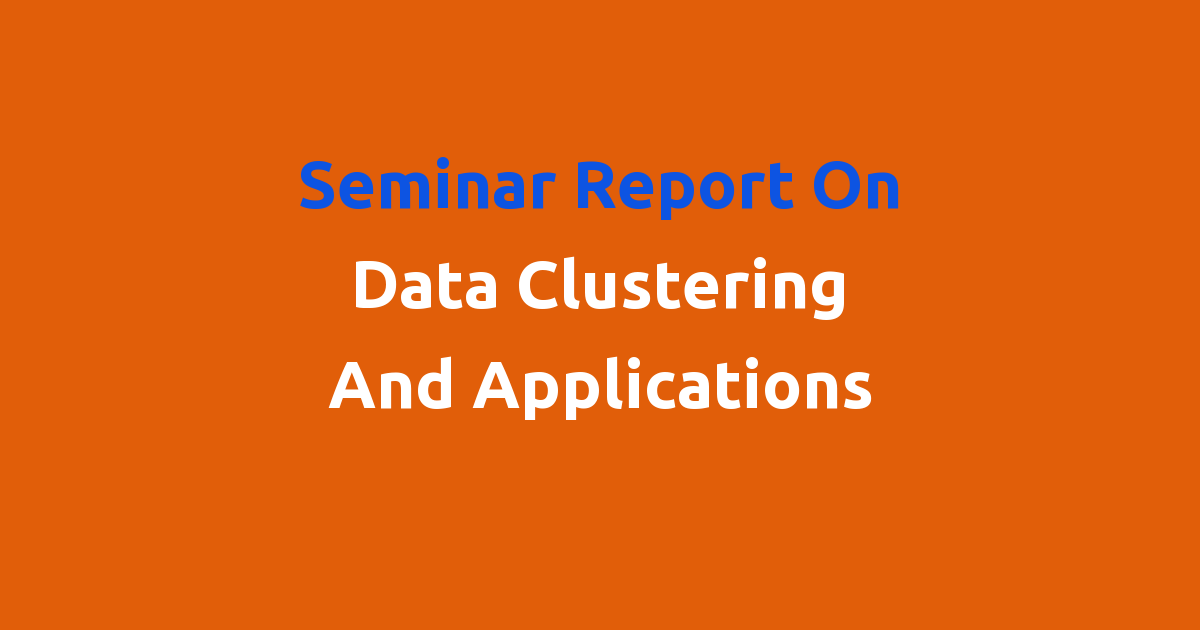Report on a seminar discussing data clustering and its applications.
Seminar Report on Data Clustering and Applications
Introduction
Data clustering is a widely used technique in the field of data mining and machine learning. It involves grouping similar data points together to form clusters based on certain criteria. This seminar report will delve into the concept of data clustering, its applications, and the existing systems in place. It will also propose a new system with its advantages and features.
Problem Statement
With the exponential growth of data in various industries, the need for effective data analysis techniques has become more prevalent. Traditional methods of data analysis are often time-consuming and may not be suitable for large datasets. Data clustering helps in organizing and understanding complex data sets by identifying patterns and relationships within the data. However, the existing systems may have limitations in terms of scalability, accuracy, and efficiency.
Existing System
The existing systems for data clustering include algorithms such as K-means, hierarchical clustering, DBSCAN, and more. These algorithms have been widely used in various applications such as customer segmentation, image processing, anomaly detection, and so on. However, these algorithms may have limitations in terms of handling high-dimensional data, outliers, and noisy data. They may also require manual tuning of parameters, which can be time-consuming and subjective.
Disadvantages
Some of the disadvantages of the existing systems for data clustering include:
1. Limited scalability for large datasets
2. Sensitivity to outliers and noise
3. Manual tuning of parameters
4. Difficulty in handling high-dimensional data
5. Lack of interpretability of clusters
Proposed System
The proposed system aims to address the limitations of the existing systems by introducing a novel clustering algorithm that can handle large datasets, outliers, and high-dimensional data efficiently. The algorithm will be based on a combination of different clustering techniques, such as density-based clustering, partition-based clustering, and model-based clustering. It will also incorporate automated parameter tuning and feature selection techniques to improve accuracy and scalability.
Advantages
Some of the advantages of the proposed system include:
1. Improved scalability for large datasets
2. Robustness to outliers and noise
3. Automated parameter tuning
4. Feature selection for high-dimensional data
5. Enhanced interpretability of clusters
Features
The proposed system will have the following features:
1. Advanced clustering algorithm combining different techniques
2. Automated parameter tuning and feature selection
3. Scalability for large datasets
4. Robustness to outliers and noise
5. User-friendly interface for easy implementation and visualization of results
Conclusion
In conclusion, data clustering is an essential technique for organizing and understanding complex datasets. The existing systems have limitations that can hinder their effectiveness in real-world applications. The proposed system aims to overcome these limitations by introducing a novel clustering algorithm with improved scalability, accuracy, and efficiency. By leveraging automated parameter tuning and feature selection techniques, the proposed system can provide more reliable and interpretable clustering results for various applications.

